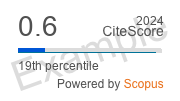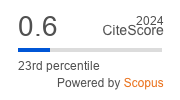Peptides are cardioprotective drugs of the future. Glucagon-like peptide-1
https://doi.org/10.29001/2073-8552-2025-40-3-11-18
Abstract
The high mortality rate of patients with acute myocardial infarction (AMI) remains the most pressing issue of modern cardiology. Over the past 10 years, there has been no significant reduction in mortality among patients with AMI. It is quite obvious that there is an urgent need to develop fundamentally new drugs for the treatment of AMI. Glucagon-like peptide-1 receptor (GLP1R) agonists have some promise in this regard. GLP1R agonists have been shown to be able to prevent both ischemic and reperfusion injury to the heart. These compounds not only reduce infarct size, but also improve recovery of cardiac contractility in reperfusion. There is evidence that GLP1R agonists prevent adverse post-infarction remodeling of the heart. These data suggest a need of clinical trials of GLP1R agonists in patients with AMI and percutaneous coronary intervention. Inhibitors of dipeptidyl peptidase-4 which hydrolyzes glucagon-like peptide-1 to inactive peptides have similar positive effects. It has been shown that kinases, heme oxygenase-1 and NO-synthase are involved in the cardioprotective effect of GLP1R agonists.
Keywords
About the Authors
S. V. PopovRussian Federation
Sergey V. Popov - Dr. Sci. (Med.), Academician of the Russian Academy of Sciences, Director, Cardiology Research Institute, Tomsk NRMC.
111a, Kievskaya str., Tomsk, 634012
A. A. Boshchenko
Russian Federation
Alla A. Boshchenko - Dr. Sci. (Med.), Deputy Director for Research, Cardiology Research Institute, Tomsk NRMC.
111a, Kievskaya str., Tomsk, 634012
L. N. Maslov
Russian Federation
Leonid N. Maslov - Dr. Sci. (Med.), Professor, Head of the Laboratory of Experimental Cardiology, Cardiology Research Institute, Cardiology Research Institute, Tomsk NRMC.
111a, Kievskaya str., Tomsk, 634012
O. A. Zhuravleva
Russian Federation
Olga A. Zhuravleva - Cand. Sci. (Med.), Research Scientist, Department of Atherosclerosis and Chronic Ischemic Heart Disease, Cardiology Research Institute, Cardiology Research Institute, Tomsk NRMC.
111a, Kievskaya str., Tomsk, 634012
A. V. Mukhomedzyanov
Russian Federation
Alexander V. Mukhomedzyanov - Cand. Sci. (Med.), Research Scientist, Laboratory of Experimental Cardiology, Cardiology Research Institute, Cardiology Research Institute, Tomsk NRMC.
111a, Kievskaya str., Tomsk, 634012
A. S. Slidnevskaya
Russian Federation
Alisa S. Slidnevskaya - Senior Laboratory Assistant, Laboratory of Experimental Cardiology, Cardiology Research Institute, Cardiology Research Institute, Tomsk NRMC.
111a, Kievskaya str., Tomsk, 634012
A. Kan
Russian Federation
Arthur Kan - Senior Laboratory Assistant, Laboratory of Experimental Cardiology, Cardiology Research Institute, Cardiology Research Institute, Tomsk NRMC.
111a, Kievskaya str., Tomsk, 634012
N. V. Naryzhnaya
Russian Federation
Natalia V. Naryzhnaya - Dr. Sci. (Med.)., Leading Research Scientist, Laboratory of Experimental Cardiology, Cardiology Research Institute, Research Institute, Tomsk NRMC.
111a, Kievskaya str., Tomsk, 634012
Yu. K. Podoksenov
Russian Federation
Yuri K. Podoksenov - Dr. Sci. (Med.), Leading Research Scientist, Department of Cardiovascular Surgery, Research Institute of Cardiology, Cardiology Research Institute, Tomsk NRMC.
111a, Kievskaya str., Tomsk, 634012
References
1. Motova A.V., Karetnikova V.N., Osokina A.V., Polikutina O.M., Barbarash O.L. Type 2 myocardial infarction: Diagnostic features in real clinical practice. Siberian Journal of Clinical and Experimental Medicine. 2022;37(3):75–82. (In Russ.). https://doi.org/10.29001/2073-8552-202237-3-75-82.
2. Currey E.M., Falconer N., Isoardi K.Z., Barras M. Impact of pharmacists during in-hospital resuscitation or medical emergency response events: A systematic review. Am. J. Emerg. Med. 2024;75:98–110. https://doi.org/10.1016/j.ajem.2023.10.020.
3. Ashraf S., Farooq U., Shahbaz A., Khalique F., Ashraf M., Akmal R. et al. Factors Responsible for Worse Outcomes in STEMI Patients With Early vs Delayed Treatment Presenting in a Tertiary Care Center in a Third World Country. Curr. Probl. Cardiol. 2024;49(1):102049. https://doi.org/10.1016/j.cpcardiol.2023.102049.
4. Nanavaty D., Sinha R., Kaul D., Sanghvi A., Kumar V., Vachhani B. et al. Impact of COVID-19 on acute myocardial infarction: A national inpatient sample analysis. Curr. Probl. Cardiol. 2024;49(1):102030. https://doi.org/10.1016/j.cpcardiol.2023.102030.
5. Hti Lar Seng N.S., Zeratsion G., Pena Zapata O.Y., Tufail M.U., Jim B. Utility of cardiac troponins in patients with chronic kidney dis ease. Cardiol. Rev. 2024;32(1):62–70. https://doi.org/10.1097/CRD.0000000000000461.
6. Luo Q., Sun W., Li Z., Sun J., Xiao Y., Zhang J. et al. Biomaterials-mediated targeted therapeutics of myocardial ischemia-reperfusion injury.
7. Biomaterials. 2023;303:122368. https://doi.org/10.1016/j.biomaterials.2023.122368.
8. Vyshlov E.V., Alexeeva Ya.A., Ussov W.Yu., Mochula O.V., Ryabov V.V. Phenomena of microvascular myocardial injury in patients with primary ST-segment elevation myocardial infarction: Prevalence and association with clinical characteristics. Siberian Journal of Clinical and Experimental Medicine. 2022;37(1):36–46. (In Russ.). https://doi.org/10.29001/2073-8552-2021-36-4-36-46
9. Li M., Hu L., Li L. Research progress of intra-aortic balloon counterpulsation in the treatment of acute myocardial infarction with cardiogenic shock: A review. Medicine (Baltimore). 2023;102(49):e36500. https://doi.org/10.1097/MD.0000000000036500.
10. Sandoval D.A., D’Alessio D.A. Physiology of proglucagon peptides: Role of glucagon and GLP-1 in health and disease. Physiol. Rev. 2015;95(2):513–548. https://doi.org/10.1152/physrev.00013.2014.
11. Ussher J.R., Drucker D.J. Glucagon-like peptide 1 receptor agonists: cardiovascular benefits and mechanisms of action. Nat. Rev. Cardiol. 2023;20(7):463–474. DOI: 10.1038/s41569-023-00849-3.
12. Bose A.K., Mocanu M.M., Carr R.D., Brand C.L., Yellon D.M. Glucagon-like peptide 1 can directly protect the heart against ischemia/reper injury. Diabet diabetes.54.1.146.
13. Bose A.K., Mocanu M.M., Carr R.D., Yellon D.M. Myocardial Ischaemia-reperfusion Injury is attenuated by intact glucagon like peptide-1 (GLP-1) in the in vitro rat heart and may involve the p70s6K Pathway. Cardiovasc. Drugs Ther. 2007;21(4):253–256. https://doi.org/10.1007/s10557-007-6030-6.
14. Mocanu M.M., Carr R.D., Yellon D.M. Myocardial Ischaemia-reperfusion Injury is attenuated by intact glucagon like peptide-1 (GLP-1) in the in vitro rat heart and may involve the p70s6K Pathway. Cardiovasc. Drugs Ther. 2007;21(4):253–256. https://doi.org/10.1007/s10557-007-6030-6.
15. Sonne D.P., Engstrom T., Treiman M. Protective effects of GLP-1 analogues exendin-4 and GLP-1(9–36) amide against ischemia–reperfusion injury in rat heart. Regul. Pept. 2008;146(1–3):243–249. https://doi.org/10.1016/j.regpep.2007.10.001.
16. Noyan-Ashraf M.H., Momen M.A., Ban K., Sadi A.-M., Zhou Y.-Q., Riazi A.M. et al. GLP-1R agonist liraglutide activates cytoprotective pathways and improves outcomes after experimental myocardial infarction in mice. Diabetes. 2009;58(4):975–983. https://doi.org/10.2337/db081193.
17. Ossum A., van Deurs U., Engstrom T., Jensen J.S., Treiman M. The cardioprotective and inotropic components of the postconditioning effects of GLP-1 and GLP-1(9–36)a in an isolated rat heart. Pharmacol. Res. 2009;60(5):411–417. https://doi.org/10.1016/j.phrs.2009.06.004.
18. Ban K., Kim K.-H., Cho C.-K., Sauvé M., Diamandis E.P., Backx P.H. et al. Glucagon-like peptide (GLP)-1(9-36)amide-mediated cytoprotection is blocked by exendin(9-39) yet does not require the known GLP-1 receptor. Endocrinology. 2010;151(4):1520–1531. https://doi.org/10.1210/en.2009-1197.
19. Bao W., Aravindhan K., Alsaid H., Chendrimada T., Szapacs M., Citerone D.R. et al. Albiglutide, a long lasting glucagon-like peptide-1 analog, protects the rat heart against ischemia/reperfusion injury: Evidence for improving cardiac metabolic efficiency. PLoS One. 2011;6(8):e23570. https://doi.org/10.1371/journal.pone.0023570.
20. Dokken B.B., La Bonte L.R., Davis-Gorman G., Teachey M.K., Seaver N., McDonagh P.F. Glucagon-like peptide-1 (GLP-1), immediately prior to reperfusion, decreases neutrophil activation and reduces myocardial infarct size in rodents. Horm. Metab. Res. 2011;43(5):300–305. https://doi.org/10.1055/s-0031-1271777.
21. Salling H.K., Döhler K.D., Engstrom T., Treiman M. Postconditioning with curaglutide, a novel GLP-1 analog, protects against heart ischemia-reperfusion injury in an isolated rat heart. Regul. Pept. 2012;178(1–3):51–55. https://doi.org/10.1016/j.regpep.2012.06.007.
22. Hu G., Zhang Y., Jiang H., Hu X. Exendin-4 attenuates myocardial ischemia and reperfusion injury by inhibiting high mobility group box 1 protein expression. Cardiol. J. 2013;20(6):600–604. https://doi.org/10.5603/CJ.2013.0159.
23. Wohlfart P., Linz W., Hübschle T., Linz D., Huber J., Hess S. et al. Cardioprotective effects of lixisenatide in rat myocardial ischemia-reperfusion injury studies. J. Transl. Med. 2013;11:84. DOI: 10.1186/1479-5876-1184.
24. Bao W., Holt L.J., Prince R.D., Jones G.X., Aravindhan K., Szapacs M. et al. Novel fusion of GLP-1 with a domain antibody to serum albumin prolongs protection against myocardial ischemia/reperfusion injury in the rat. Cardiovasc. Diabetol. 2013;12(1):148. https://doi.org/10.1186/14752840-12-148.
25. Ye Y., Qian J., Castillo A.C., Ling S., Ye H., Perez-Polo J.R. et al. Phosphodiesterase-3 inhibition augments the myocardial infarct size-limiting effects of exenatide in mice with type 2 diabetes. Am. J. Physiol. Heart Circ. Physiol. 2013;304(1):H131–H141. https://doi.org/10.1152/ajpheart.00609.2012.
26. Tsutsumi Y.M., Tsutsumi R., Hamaguchi E., Sakai Y., Kasai A., Ishikawa Y. et al. Exendin-4 ameliorates cardiac ischemia/reperfusion injury via caveolae and caveolins-3. Cardiovasc. Diabetol. 2014;13(1):132. https://doi.org/10.1186/s12933-014-0132-9.
27. Hamaguchi E., Tanaka K., Tsutsumi R., Sakai Y., Fukuta K., Kasai A. et al. Exendin-4, glucagon-like peptide-1 receptor agonist, enhances isoflurane-induced preconditioning against myocardial infarction via caveolin-3 expression. Eur. Rev. Med. Pharmacol. Sci. 2015;19(7):1285– 1290. URL: https://www.europeanreview.org/article/8590 (13.05.2024).
28. Ihara M., Asanuma H., Yamazaki S., Kato H., Asano Y., Shinozaki Y. et al. An interaction between glucagon-like peptide-1 and adenosine contributes to cardioprotection of a dipeptidyl peptidase 4 inhibitor from myocardial ischemia-reperfusion injury. Am. J. Physiol. Heart Circ. Physiol. 2015;308(10):H1287–H1297. https://doi.org/10.1152/ajpheart.00835.2014.
29. Du J., Zhang L., Wang Z., Yano N., Zhao Y.T., Wei L. et al. Exendin-4 induces myocardial protection through MKK3 and Akt-1 in infarcted hearts. Am. J. Physiol. Cell Physiol. 2016;310(4):C270–C283. https://doi.org/10.1152/ajpcell.00194.2015.
30. Robinson E., Tate M., Lockhart S., McPeake C., O’Neill K.M., Edgar K.S. et al. Metabolically-inactive glucagon-like peptide-1(9–36)amide con fers selective protective actions against post-myocardial infarction remodelling. Cardiovasc. Diabetol. 2016;15(1):65. https://doi.org/10.1186/s12933-016-0386-5.
31. Wang X., Ding Z., Yang F., Dai Y., Chen P., Theus S. et al. Modulation of myocardial injury and collagen deposition following ischaemia– reperfusion by linagliptin and liraglutide, and both together. Clin. Sci. 2016;130(15):1353–1362. https://doi.org/10.1042/CS20160061.
32. Takada S., Masaki Y., Kinugawa S., Matsumoto J., Furihata T., Mizushima W. et al. Dipeptidyl peptidase-4 inhibitor improved exercise capacity and mitochondrial biogenesis in mice with heart failure via activation of glucagon-like peptide-1 receptor signalling. Cardiovasc. Res. 2016;111(4):338–347. https://doi.org/10.1093/cvr/cvw182.
33. Ekström K., Dalsgaard M., Iversen K., Pedersen-Bjergaard U., Vejlstrup N., Diemar S.S. et al. Effects of liraglutide and ischemic postconditioning on myocardial salvage after I/R injury in pigs. Scand. Cardiovasc. J. 2017;51(1):8–14. https://doi.org/10.1080/14017431.2016.1197417.
34. Chen J., Wang D., Wang F., Shi S., Chen Y., Yang B. et al. Exendin-4 inhibits structural remodeling and improves Ca2+ homeostasis in rats with heart failure via the GLP-1 receptor through the eNOS/cGMP/ PKG pathway. Peptides. 2017;90:69–77. https://doi.org/10.1016/j.peptides.2017.02.008.
35. Baba S., Iwasa M., Higashi K., Minatoguchi S., Yamada Y., Kanamori H. et al. Antidiabetic drug alogliptin protects the heart against ischemia-reperfusion injury through GLP-1 receptor-dependent and receptor-independent pathways involving nitric oxide production in rabbits. J. Cardiovasc. Pharmacol FJC.0000000000000531.
36. Eid R.A., Bin-Meferij M.M., El-kott A.F., Eleawa S.M., Zaki M.S.A., Al-Shraim M. et al. Exendin-4 protects against myocardial ischemia-reperfusion injury by upregulation of SIRT1 and SIRT3 and activation of AMPK. J. Cardiovasc. Transl. Res. 2021;14(4):619–635. https://doi.org/10.1007/s12265-020-09984-5.
37. Ismaeil A., Babiker F., Al-Sabah S. Discrepancy between the actions of glucagon-like peptide-1 receptor ligands in the protection of the heart against ischemia reperfusion injury. Pharmaceuticals. 2022;15(6):720. https://doi.org/10.3390/ph15060720.
38. Zhou G., Wu H., Yang J., Ye M., Liu D., Li Y. et al. Liraglutide attenuates myocardial ischemia/reperfusion injury through the inhibition of necroptosis by activating GLP-1R/PI3K/Akt pathway. Cardiovasc. Toxicol. 2023;23(3–4):161–175. https://doi.org/10.1007/s12012-023-09789-3.
39. Matsubara M., Kanemoto S., Leshnower B.G., Albone E.F., Hinmon R., Plappert T. et al. Single dose GLP-1-Tf ameliorates myocardial ischemia/reperfusion injury. J. Surg. Res. 2011;165(1):38–45. https://doi.org/10.1016/j.jss.2009.03.016.
40. Chang G., Zhang D., Yu H., Zhang P., Wang Y., Zheng A. et al. Cardioprotective effects of exenatide against oxidative stress-induced injury. Int. J. Mol. Med. 2013;32(5):1011–1020. https://doi.org/10.3892/ijmm.2013.1475.
41. de Miranda D.C., de Oliveira Faria G., Hermidorff M.M., dos Santos Silva F.C., de Assis L.V.M., Isoldi M.C. Preand post-conditioning of the heart: An overview of cardioprotective signaling pathways. Curr. Vasc. Pharmacol. 2021;19(5):499–524. https://doi.org/10.2174/1570161119666201120160619.
42. Fang X., Ardehali H., Min J., Wang F. The molecular and metabolic landscape of iron and ferroptosis in cardiovascular disease. Nat. Rev. Cardiol. 2023;20(1):7–23. https://doi.org/10.1038/s41569-022-00735-4.
43. Yellon D.M., Downey J.M. Preconditioning the myocardium: From cellular physiology to clinical cardiology. Physiol. Rev. 2003;83(4):1113– 1151. https://doi.org/10.1152/physrev.00009.2003.
44. Ding W.G., Kitasato H., Matsuura H. Involvement of calmodulin in glucagon-like peptide 1(7-36) amide-induced inhibition of the ATP-sensitive K+ channel in mouse pancreatic β-Cells. Exp. Physiol. 2001;86(3):331–339. https://doi.org/10.1113/eph8602173.
45. Maslov L.N., Popov S.V., Naryzhnaya N.V., Mukhomedzyanov A.V., Kurbatov B.K., Derkachev I.A. et al. KATP channels are regulators of programmed cell death and targets for the creation of novel drugs against ischemia/reperfusion cardiac injury. Fundam. Clin. Pharmacol. 2023;37(6):1020–1049. https://doi.org/10.1111/fcp.12924.
Review
For citations:
Popov S.V., Boshchenko A.A., Maslov L.N., Zhuravleva O.A., Mukhomedzyanov A.V., Slidnevskaya A.S., Kan A., Naryzhnaya N.V., Podoksenov Yu.K. Peptides are cardioprotective drugs of the future. Glucagon-like peptide-1. Siberian Journal of Clinical and Experimental Medicine. 2025;40(3):11-18. (In Russ.) https://doi.org/10.29001/2073-8552-2025-40-3-11-18





.png)





























